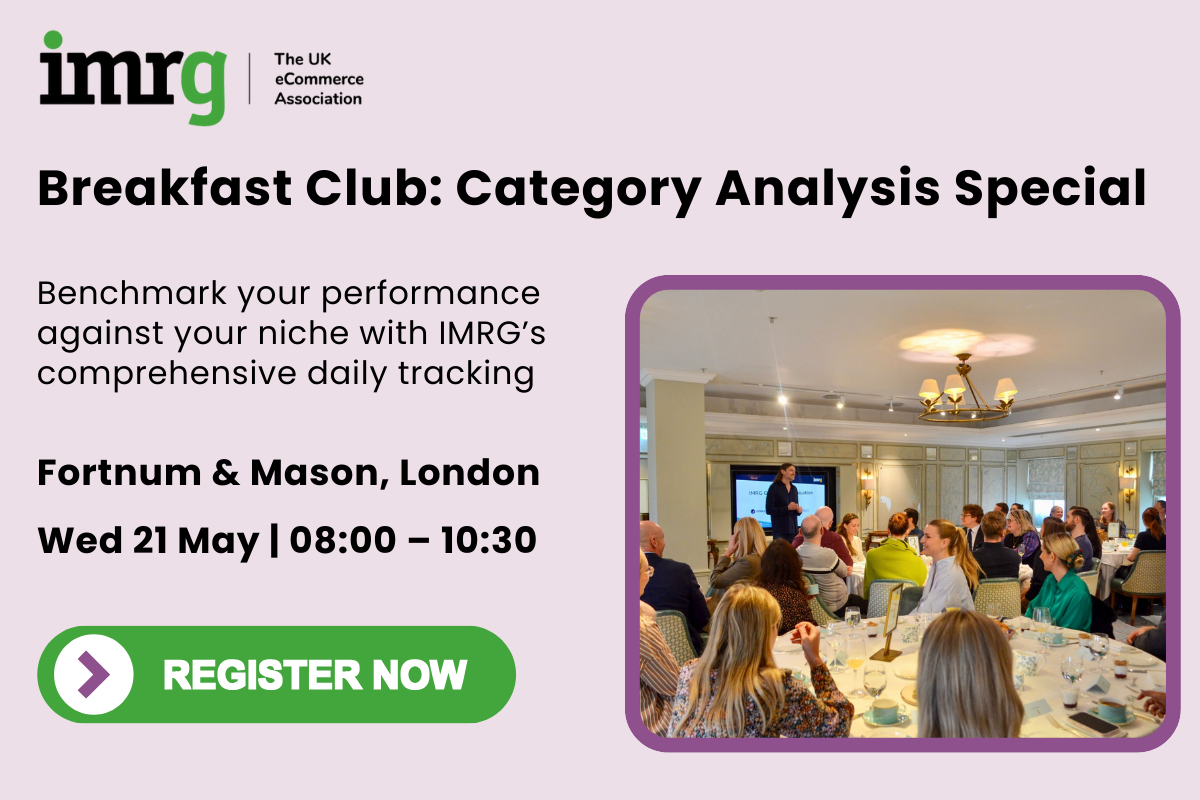By Gabriel Hughes, CEO at Metageni
Predictive analytics encompasses a wide range of data analytics techniques, and is used by consumer businesses to predict industry changes, customer behaviour and any other future outcomes for the business in an area of particular interest. It includes a range of statistical methods and machine learning models, and is also used in models of business and marketing scenario planning. For online businesses, the relevance of predictive analytics is increasing with the loss of third-party cookies which creates new gaps in digital touch point data and makes it increasingly difficult to pinpoint consumer insights to support accurate marketing ROI.
Today, retailers should focus on their first-party data collection as the core foundation for improved data analytics. This can be challenging where there is sometimes lack of trust and few genuinely meaningful customer relationships. This is precisely where predictive analytics can make a difference for marketers. If the business is interested in becoming data-driven, predictive analytics is about moving beyond the data to really get to know your customers, develop insights and work towards building longer term value. Practically, this encompasses data collection, organisation and customer segmentation in order to discover the most valuable insights for your marketing team to base decisions on. So what are the main ways predictive analytics can specifically be applied to leverage your first party data to boost your business in this way?
Predict Customer Intent
One of the most significant and growing uses of predictive analytics is the ability to predict your customer intent. In the ultimate application, custom machine learning models can provide you with meaningful insights towards the ‘next best action’ you need to take to increase customer engagement sales. The method applied here is the segmentation of your potential and existing customers according to a predicted propensity to buy score. The greater this predicted propensity score, the greater the probability of conversion. For high scoring customers the marketing team may not even need to take any additional steps such as sending out a promotional offer, as these customers are very likely to convert anyway. At the same time, models of propensity can identify what specific factors will help convert users with a lower propensity score, by predicting the user’s reaction to a particular action, such as an offer or newsletter. In the most advanced application these models can also be leveraged to find the ‘next best action’ that has the highest overall ROI of any action. As a result, marketing budgets have reduced levels of waste and marketing decisions are adapted to each customer based on what data you have about them, instead of assuming all customers behave in the same way.
There is also an opportunity to automate these types of models by integrating them into your CRM system and setting up the dynamic scoring of the users, based on their recent behaviour and the user journey. Ultimately, businesses can deliver a highly personalised experience to every customer and understand the exact touchpoints that drive actions and outcomes. In this way predictive propensity scoring can greatly increase your short term tactical efficiency. The next logical step is to develop more meaningful customer relationships over the longer term, focusing on increased customer retention and customer lifetime value.
Develop customer relationships and increase retention
Customer lifetime value grows with increased customer loyalty and retention, building stable revenue for business over time. Predictive analytics helps by analysing customers and customer journeys to provide businesses an understanding of which customers are likely to come back, and why. By understanding customer behaviour, businesses can take proactive steps to improve customer retention and build loyalty. Customer level analytics can provide you with a more personalised experience for your customers, which can deepen engagement and build loyalty. The next step is to use machine learning models to predict which customer segments are likely to make repeat purchases and identify the key reasons why. Successful touchpoints and actions can also be identified within other segments which may be less likely to buy more than once, so teams understand what components increase the likelihood of a repeat purchase.
Predictive analytics not only provides insights and actions for key customer segments, but also identifies which characteristics are shared by the most loyal customers. This helps businesses focus on acquiring and retaining customers that are most valuable to them. A data-driven approach improves your marketing campaigns to achieve overall sales targets, and can also allow you to adjust prospect customer segmentation and targeting based on your existing customer profiles. This is much more reliable than relying on marketing platforms alone, which often have weak underlying data and provide generalised audience profiles and reports. It is also crucial to measure your results effectively and focus on accurate multi touch attribution for each customer segment, so you can understand how best to engage with them going forward.
Optimise marketing ROI
Multi-touch attribution models are used to assign credit to digital marketing touch points along the customer path to purchase. Attribution analytics can be demanding and complex. The digital marketing industry has finally recognised that ‘last click’ attribution is not accurate enough, and that custom modelling should be preferred.

Attribution provides a more complete view of the customer journey, and yet new challenges in digital marketing measurement have made matters worse. In the post-pandemic world, retailers have seen a surge in ecommerce sales and have invested greatly into multi-channel marketing which means the attribution of marketing to sales has become even more challenging with increased multi-touch customer journeys. It is more difficult than ever to establish which channels have influenced a customer’s decision to buy when they are converting online. It could be a social media post, a PPC click, an affiliate offer or something offline like a billboard on the street. With respect to the measurement of marketing effectiveness, the question becomes to which touchpoint the conversion should be attributed. If the measurement is not precise, the result can be low marketing ROI due to investing in channels which do not work, and ignoring those which do work.
One of main challenges with attribution has been how to decide which is the ‘right’ model. Data-driven attribution aims to answer this question, but on closer examination, it is clear that different data-driven attribution models also yield very different attribution results, and so the challenge remains. This is where predictive analytics can again play a role, using the accuracy of conversion prediction as a measure of how accurate the model is for assigning value to marketing i.e. a marketing activity which more strongly predicts sales is deemed to be more effective than a marketing activity which does not. Attribution is unique for each business, depending on their customer behaviour, the industry, marketing channel choices and user journey complexity. Predictive machine learning modelling allows you to build a personalised attribution model, leveraging customer and well as marketing signals, which will not only allow you to measure marketing effectiveness more accurately, but also increase ROI exponentially.
What’s more, predictive analytics and machine learning allows you to analyse both paid and organic channels simultaneously and provide a very high level of accuracy when it comes to attribution. It is also possible to incorporate more conventional econometrics to analyse and optimise offline channels as a part of the whole user journey in order to create a seamless and personalised experience for customers. In other words this provides holistic measurement. Our cutting-edge software allows you to analyse an unprecedented amount of data, including web pages, call centre interactions, and more, to get accurate feedback on the effectiveness of all your marketing channels.
Summary
To conclude, predictive analytics powered by AI (machine learning) allows businesses to become data-driven, to scale by automating processes, and bring clarity to data. Without clear, actionable conclusions and insights, your first party data cannot reach its full potential. Now, more than ever, it is crucial to make data-driven decisions in order to reduce waste and build deeper customer engagement. Being able to accurately predict customer behaviour is crucial for retailers and consumer facing businesses that want to take a highly personalised and targeted approach. This should lead to increased trust and to developing meaningful relationships, which should return retention and contribute to revenue. Business success comes from knowing your customers’ wants and needs, which should be followed by understanding how, when and where to engage with them. Predictive analytics gives marketing and data teams these actionable insights and capabilities to support marketing automation and robust, commercial decision making.
Get in touch with us for expert advice!
Thanks for reading – we hope you learned something through this high-level tour of marketing effectiveness methods. If you want to learn more about expert data analytics using AI, or are interested in how Metageni can help you use your data to grow online, then do get in touch with us: [email protected]
Published 06/07/2022



